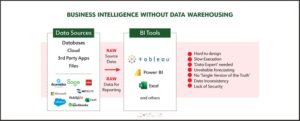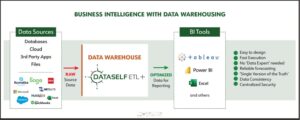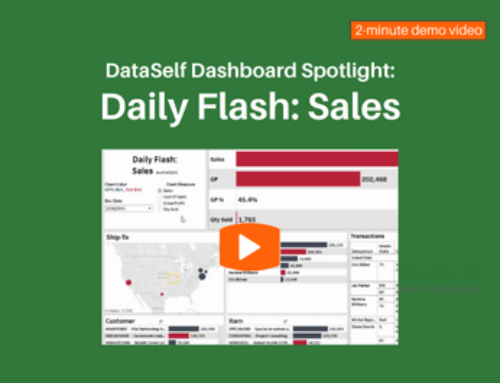Business Intelligence Versus BI-Based Reporting
“The Value of reports relies on the quality of your data.”
With the increased use of Business Intelligence tools over the past decade, people seem to have forgotten that as powerful as BI technology is, it’s still completely dependent on the quantity, quality, and organization of the data that it’s reporting on. For example:
- Quantity. The amount of data stored in business apps – like ERP or CRM – continues to grow. What we once measured in megabytes, we now measure in gigabytes . . .and terabytes. And, although BI technologies are more flexible in their search routines, there are challenges in retrieving in real-time large data sets from ERP, CRM, and other digital systems.
- Quality. Another maxim in the reporting world is “garbage in; garbage out”. Even the most diligently entered (& monitored) data contains errors, omissions, and inconsistencies. Issues like these invariably arise when an organization seeks the ever-elusive “single version of the truth” regarding the performance of its business activities.
- Organization. Databases from business apps are organized for transactional processing. Although ideal for data entry, it is problematic for reporting. Transactional databases are jam-packed with extraneous detail that doesn’t yield strategic, performance-based insight. BI reports built off of transactional data are cumbersome to build and slow to execute.
As BI is only as good as the data it reports on, the solution to the challenges of data quantity, quality, and organization is simple: improve the data.
This is achieved via a data warehouse.
- A data warehouse is a technology businesses use to optimize and store data for reporting and analytics.
- It is a central repository for both current and historical data gathered from one (or many) transactional databases.
The key word here is: optimize – data warehousing uses a technology called “ETL” to reduce the real-time extracted data quantity, improve the data quality, and organize the data for analysis. ETL stands for Extract, Transform, and Load, and it extracts analytical data, transforms it through cleansing, standardizing, and creating ‘smart metrics’, and then loads it into a robust, scalable, SQL Server data warehouse.
The combination of data warehousing and business intelligence offers the following benefits:
- Reports are easier to design due to simplified data components in the data warehouse
- Reports run faster due to containing optimized reporting data in the data warehouse
- Businesses don’t have to wait for a “data expert” to retrieve needed info
- Performance assessment & forecasting are more accurate due to improved data quality
- Improved data consistency due to normalization in the warehouse
- Improved data security due to consolidated data access in the warehouse
- A 360-degree view of a business based on combined content from multiple data silos
- A “single version of the truth” based on centrally managed data, KPIs, and superior analytics
In summary, data warehousing enables BI tools like Tableau or Power BI to fulfill their promise by delivering meaningful analytics where and when they’re needed.
Business Intelligence without Data Warehousing will look something like this:

…whereas BI-Based Reporting, making use of a Data Warehouse will look like this:




